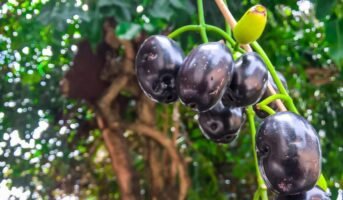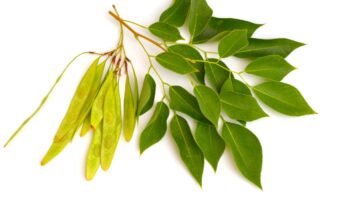Jasminum auriculatum is a favorite of any plant lover. The beautiful fragrance of its flower, commonly known as Juhi or Malli, can instantly elevate your day. The pure white flowers and dark green leaves bring peace of mind to the onlookers.
This species of Jasmine is a member of the Oleaceae family. Traditionally, the plant has several uses and even has medicinal qualities.
see also: all about Climber Plant
Facts about Jasminum Auriculatum
| Name | Jasminum auriculatum |
| Family | Oleaceae |
| Growth Form | Climber, Shrub |
| Life | Perennial |
| Native | India, Nepal, Sri Lanka |
| Pollination | Biotic |
| Nutrition | Autotrophic |
| Preferred Climate | Tropical |
| Uses | Cultural, Cosmetic, Ornamental, and Medicinal |
Why is Jasminum Auriculatum best suited for your garden?
Jasminum auriculatum is an evergreen plant with perennial flowers. It would last in your garden for several years if taken care of properly. It is also a fast-growing plant that can be maintained as a bush or a climber. If these reasons are insufficient, here are more reasons to grow this beautiful plant in your home garden.
Uses of Jasminum Auriculatum
- The flower is made into garlands and adorned by women on special occasions.
- It is used as a décor for traditional functions and events.
- The wonderful fragrance of Jasmine is utilized to make perfumes, essential oils, incense, and other aromatic products.
- Almost all parts of the plant have medicinal value and are used in Ayurveda.
Medicinal benefits of Jasminum Auriculatum
- The roots of Jasminum auriculatum are consumed as a decoction for relief from some urinary and renal problems
- An infusion of its origins and leaf can be used for problems in the gums and oral cavity
- The leaves and seeds also have the quality to heal wounds
- A paste made from its origin gets in use to cure headaches and eye disorders
- It is even said to benefit the health of one’s heart.
Care guide
It is effortless to care for a Jasminum auriculatum. It does not have too many specific requirements. It would flourish in a suitable climate with sufficient water. Here are some of the essential plant care guidelines for this species.

Source: data.addrun.org
Sunlight: The plant needs good bright natural light. It can sustain in the shade too. However, it would be best if the plant’s location is not frequently changed to shade and full sunshine.
Soil: Humus-rich fertile soil that drains well is ideal for Jasminum auriculatum. One can use fertilizer between June-July. Soil rich in organic content is the most preferred. If it is in a pot, you may re-pot the plant every 2-3 years.
Temperature: Initially, the plant is found in tropical and subtropical areas. Therefore, temperatures between 18- and 30 degrees Celsius work well for the plant to grow.
Watering: The plant needs to be watered well during summer, while the frequency reduces during winter. However, pouring too much water can kill the plant. Watering should be done when the topsoil is dry when you touch it.
Pruning: As the flowering slows down, pruning is required. One can cut damaged and older stems to maintain a healthy bush. Propagation is done through stem cutting.
Problems: There are none! The plant hardly ever faces disease or pest infection.
Jasminum Auriculatum for Home Decor
Jasminum Auriculatum is commonly used in home decor as it has a unique scent that is sweet and floral. However, it has a strong odor, which is why it is not often used for its scented blooms.
Jasminum auriculatum can be grown indoors or outdoors, but it does well in an area with high humidity and plenty of sunlight. If you’re growing it inside, remember that this plant needs a warm room—ideally 70 to 80 degrees Fahrenheit—and a light source that shines directly on its leaves daily (like a fluorescent bulb). You can also grow this plant outside if you live somewhere where it gets at least six hours of sunlight daily.
To Sum It Up
Whether you have a garden or a patio, Jasmine is a must-have for any plant lover. Jasminum auriculatum or any other varieties of Jasmine are sure to bring positive vibes to your day with their sweet aroma and stunning look. In addition, they are among the easiest flowering plants to maintain in and around your house. What’s more? You can get the pleasure of seeing them almost every day of the year!
FAQs
Is Jasminum auriculatum found only in India?
No. The plant is found in India, Nepal, Sri Lanka, and parts of Thailand and Australia.
What are its commercial uses?
The cosmetic industry uses it to make soaps and perfumes. The fragrance is also popular in products like incense, air fresheners, cleaning liquids, etc. The flower is also grown commercially on large scales because it is used for religious purposes, festivals, weddings, and other cultural events.
Is it safe to consume?
Different parts, like the roots and leaves of the plant, are used to cure various diseases. However, it is not advisable to consume it in any form without the expert views of a health practitioner (Ayurvedic).
What are the shared names of Jasminum auriculatum in India?
Juhi, Jasmine, Malligai, Malle puvvu, Mulla poove, Yutika, Jooin
Are there more varieties of Jasmine?
Out of the 200 species, we have mentioned only a few here. Some other varieties are Jasminum nudiflorum, Jasminum mesnyi, Jasminum multiflorum, Jasminum fruticans, Jasminum rex, and so on.
Housing News Desk is the news desk of leading online real estate portal, Housing.com. Housing News Desk focuses on a variety of topics such as real estate laws, taxes, current news, property trends, home loans, rentals, décor, green homes, home improvement, etc. The main objective of the news desk, is to cover the real estate sector from the perspective of providing information that is useful to the end-user.
Facebook: https://www.facebook.com/housing.com/
Twitter: https://twitter.com/Housing
Email: [email protected]











